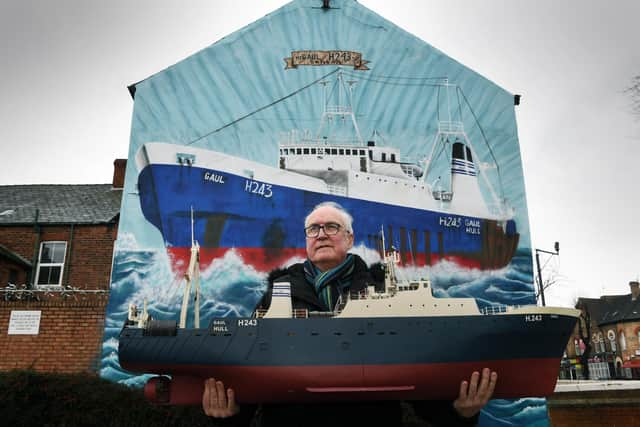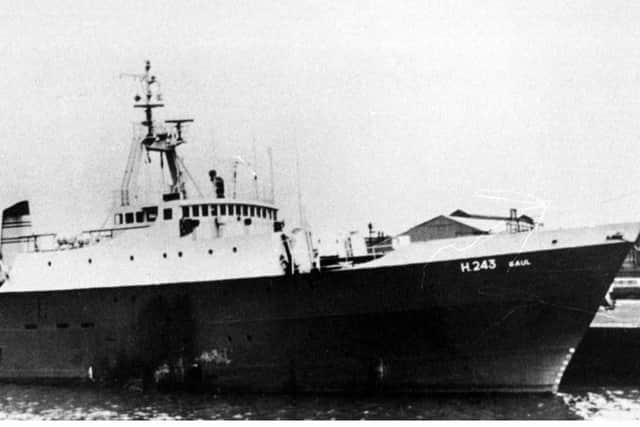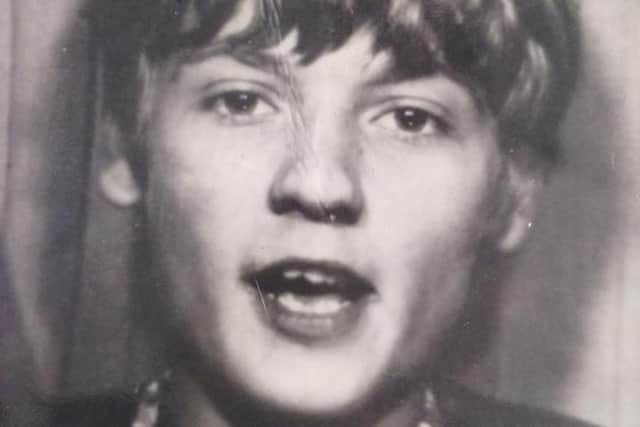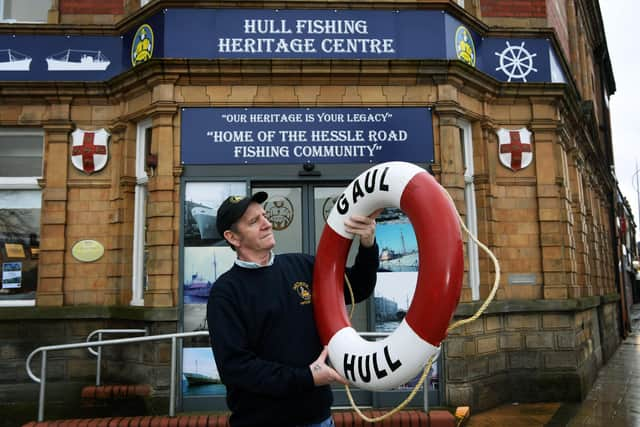The enduring mystery of Hull's Titanic as city remembers 50th anniversary of her disappearance
Her last radio call on February 8 indicated she was heading towards land. She was never seen again despite a huge search involving a Royal Naval aircraft carrier, aircraft and dozens of trawlers.
Her disappearance in a sensitive military area at the height of the Cold War and the government's refusal to continue the search led to suspicions that maybe crew members had been spying on the Russians.
Advertisement
Hide AdAdvertisement
Hide AdIn 1997, the late TV journalist Norman Fenton mounted an expedition and with remarkable ease discovered the wreck, lying next to a thick steel cable.


In his Dispatches documentary it was suggested the cable might have been associated with underwater listening devices to track Russian submarines.
The government ordered a robot dive and the remains of three crew were recovered from cabins. They found no evidence the cable was connected to the Gaul – but some relatives were not convinced.
In 2003 assistant factory manager Stan Collier was finally laid to rest after a funeral where his favourite country and western music was played.
Advertisement
Hide AdAdvertisement
Hide AdServices were also held for first mate Maurice Spurgeon, 38, from Hull, and third engineer James Wales, 29, from North Shields . A second public inquiry a year later led to official confirmation trawlers were used for espionage – but found no evidence the Gaul was one of them. Yet there was still another chapter in the story: in 2014 a UK forensic team headed to the remote Rybachy peninsula in the Murmansk region to try and identify remains which has been buried in a cave, after being washed up in 1974 or 1975.


Relatives in Hull provided DNA samples but it proved to be another false lead.
For grieving family members like Kevin Tracey, the stories which kept swirling around the Gaul opened painful wounds and were just not backed up by evidence.
His elder brother Billy, 24, a spare hand on the Gaul, he says was an "incredible guy". Highly intelligent, a good sportsman, it was believed he would go far.
Advertisement
Hide AdAdvertisement
Hide AdKevin remembers seeing Billy for the last time at his father's home on Wellsted Street before he left on board Gaul, which was taking her maiden trip from Hull. Just 18 months old, she’d previously fished out of North Shields. The six to eight week trip should have earned Billy enough money to allow him to take his mate's ticket.


Months after Billy was lost, his devastated father died on New Year's Eve 1974.
Kevin said: "With my dad having experience in the Royal Navy for 16 or 17 years, my brother James being at sea for over 10 years, they knew how violent the sea could be. In 1968 the (Hull trawlers) Ross Cleveland, Kingston Peridot and the Romanus went down.
"At the end of the day you can't get away from the strength of the sea. All the seafarers who were looking out for that ship say how remarkable that night was on February 8 when Gaul was lost.
Advertisement
Hide AdAdvertisement
Hide Ad"My family's view was that the trawler took on a heavy sea and sank. I didn't buy into the stories; we were a family grieving the loss of a brother. My father had lost his son." Gaul has gained a huge amount of attention over the years - but it was one in a long line of tragedy stretching back centuries. Hull lost a staggering 5,000 men in 912 ships over 150 years.


Ex-trawlerman Jerry Thompson, who runs Hull's Fishing Heritage Centre and has put together an impressive database of the thousands of individuals involved, lost his best mate, blond, good looking, Karl Straker on the Gaul.
Karl (pictured) was just 17 when he died, the youngest member of the crew.
Jerry himself had only narrowly escaped death months before when the Hull trawler Ian Fleming ran aground in a Norwegian fjord at Christmas 1973. He remembers vividly the lights going out, the panic that ensued, men screaming for their wives and kids. Three men were lost.
Advertisement
Hide AdAdvertisement
Hide AdHe thinks much the same would have happened on the Gaul - the ship taking on water, going over on one side, lights out, no power for the men in the wheelhouse to send a Mayday.
He said: "We always thought Titanic was unsinkable; we always thought ships like Gaul was unsinkable.
"Karl said one night to me in the pub: 'You are my hero, you are one of the lucky ones who came home'. He sailed in the Gaul and was lost. If she's been hit by something there would have been debris, an oil slick. If a submarine had hit her that would have sunk and all, she was a 1,000 tonne ship.”
The wall behind the centre boasts a striking new mural by tattoo artist Neil Posto. A big bruiser of a ship Gaul appears to burst out of the wall. Experiments carried out by investigators using models in 1999 back up Jerry and Kevin’s views. They showed Gaul was “exceptionally seaworthy”, but also revealed the “awesome” power of the sea. Unexpectedly they found she could have capsized in seconds if caught beam on to the seas by a group of very large breaking waves. This “knock-down” they said was the key to her sudden disappearance.
Advertisement
Hide AdAdvertisement
Hide AdFour days of commemorations continue today at Hull City AFC’s home game against Swansea City with Hull KR and Hull FC joining before the game as a City united at the MKM stadium, where a second mural will be unveiled.
